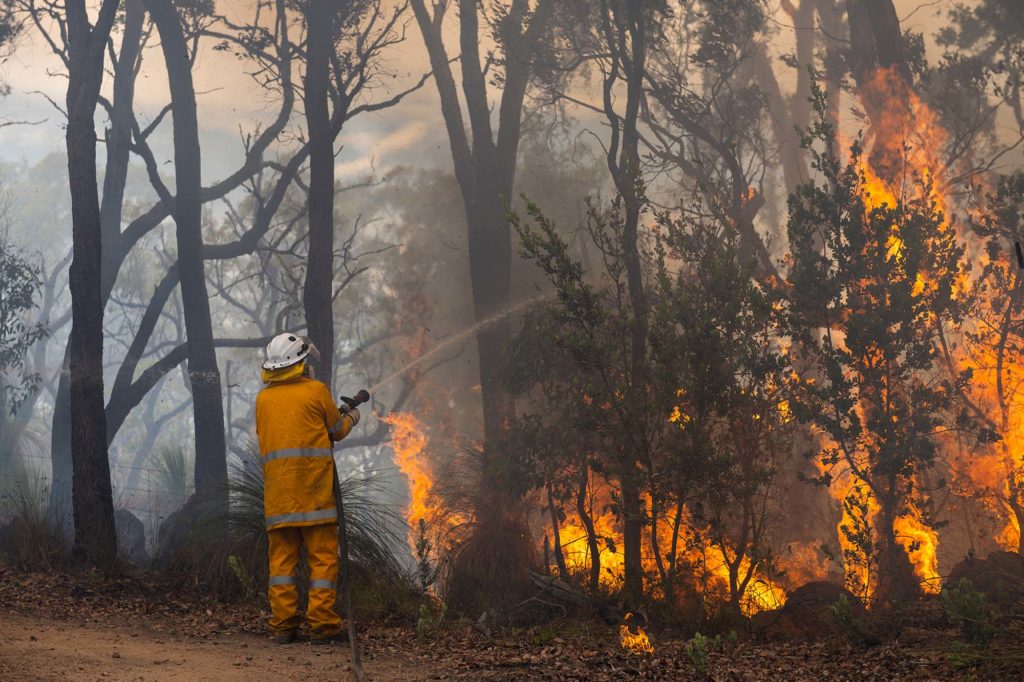What do I need to know about
new WHS reporting obligations?
WA’s new Work Health and Safety Act 2020 (WHS Act) and regulations will commence on 31 March 2022.

People Risk Manager, LGIS
Emma is the People Risk Manager for the LGIS Scheme, setting the direction of the program in response to member, sector, and industry trends. Emma manages a team of consultants focusing on people risk, including workplace health and safety, emergency management, and human resources. Emma’s extensive industry experience and knowledge covers the development and implementation of people risk initiatives aimed at improving behaviours and reducing workplace injuries.

With the new WHS Act, there are expansions and changes. Your reporting requirements, as detailed in Part 3 – Incident Notification Sect 35-39 Incident Notification, have expanded to include additional injury classifications, including the introduction of a new “dangerous incidents” category. This category includes incidents that do not cause a serious injury, but have the potential to do so and also includes the requirements to preserve the incident site.

WA’s new Work Health and Safety Act 2020 (WHS Act) and regulations will commence on 31 March 2022.
There is no hard and fast rule regarding whether contraction of the COVID-19 virus is compensable under the Workers’ Compensation & Injury Management Act 1981 (the Act) – it will need to be determined on the facts of each case.
The past two years have been tumultuous, with unplanned changes to restrictions, safety measures, and border closures adding to the stress and uncertainty of the COVID-19 pandemic.
Under the WHS Act, a notifiable incident is an incident that results in the following:
a. The death of a person, or
b. A serious injury or illness of a person, or
c. A dangerous incident.
A serious injury or illness is now classified as an injury or illness that requires the worker to have immediate treatment as an in-patient in a hospital, or immediate treatment for any of the following:
A dangerous incident is one that exposes a worker (or any other person) to a serious risk regarding health or safety stemming from an immediate or imminent exposure to any of the following:
It is important to note that a dangerous incident does not have to result in an injury to a worker or other persons but does have the potential to cause serious injury. It is important to consider the potential that may result from an incident and not just the actual impact that occurs.
A worker receives a 240-volt electric shock. The worker does not receive an injury from the shock so the actual injury would be classified as minor or report only. However, there is the potential that any electric shock can cause serious injury or death, so although the “actual” injury outcome is minor, the “potential” injury outcome of the electric shock is significant. Therefore, the incident would be a notifiable incident.
A work crew is using an Elevated Work Platform (EWP) at a height of 15m to fit some large (12kg each) flood lights on the side of
the administration building. While attempting to place one of the lights onto the wall mounting bolds, the light falls to the ground –
narrowly missing another worker who is underneath the bucket of the EWP (as there was no exclusion zone established as part of the
job setup). There was no actual injury to the worker on the ground however, the potential impact would result in a serious injury if the light had hit the worker. This event would be a dangerous incident and therefore would be notifiable.
However, if the work crew had set up an exclusion zone around the work area and no workers were within the exclusion zone when the light fell to the ground, then there is no exposure to a serious risk to a person’s health or safety and therefore the event would not be a dangerous incident and would not need to be notifiable.
The local government (the PCBU) must notify WorkSafe WA immediately after becoming aware that a notifiable incident has occurred as a result of the work being done by the local government.
Penalty for non-compliance:
It is important to remember that a site can include any plant, substance, structure, or thing that is associated with the notifiable incident.
The site can be disturbed for the purposes of assisting injured persons, removal of a deceased person, to make the site safe or to minimise the risk of a further notifiable incident, any action associated with a police investigation or where the WorkSafe WA inspector has given permission.
If you have any questions, or require further clarification, please reach out to Emma Horsefield, LGIS People Risk Manager on [email protected] or discuss with your LGIS regional risk coordinator.
Each month we take your questions to one of our LGIS team members to answer.
If you want to submit a question for next issue, email us at [email protected]

The City of Fremantle’s new agile workplace sets the standard on putting employee
wellbeing – and ergonomics – first.

The recent Intergovernmental Panel on Climate Change (IPCC) report stresses the time to act on climate change is now, and there is much work to be done – including by local governments.

Local governments are often planning exciting new places for their communities to gather and play.
LGIS is the unifying name for the dedicated suite of risk financing and management services for WA local governments, established by the WA Local Government Association in conjunction with JLT Public Sector (part of the Marsh group of companies). LGIS is managed by JLT Public Sector (ABN 69 009 098 864 AFS Licence 226827).
Risk Matters, via this website, is designed to keep members, their staff and elected members informed on topical risk management and insurance issues and LGIS programs and services.